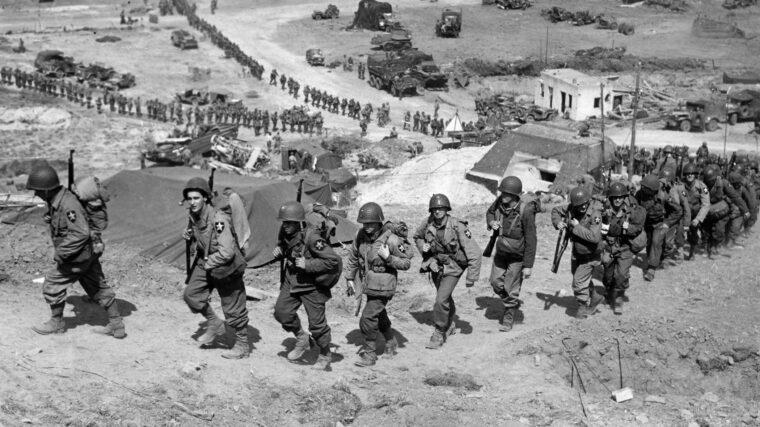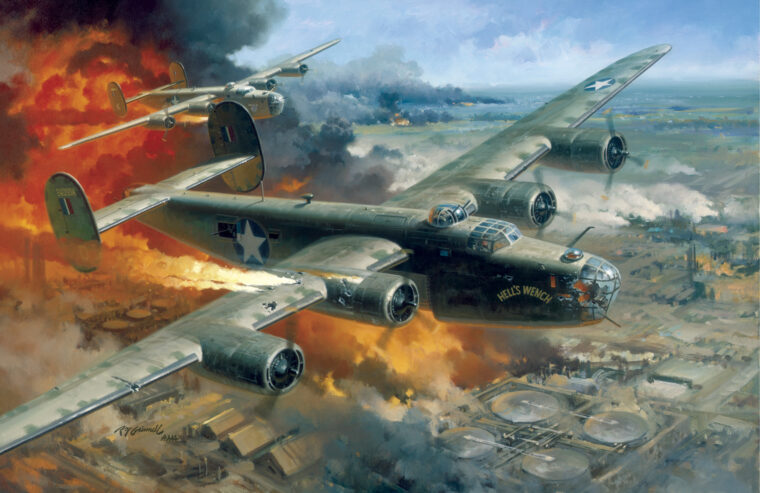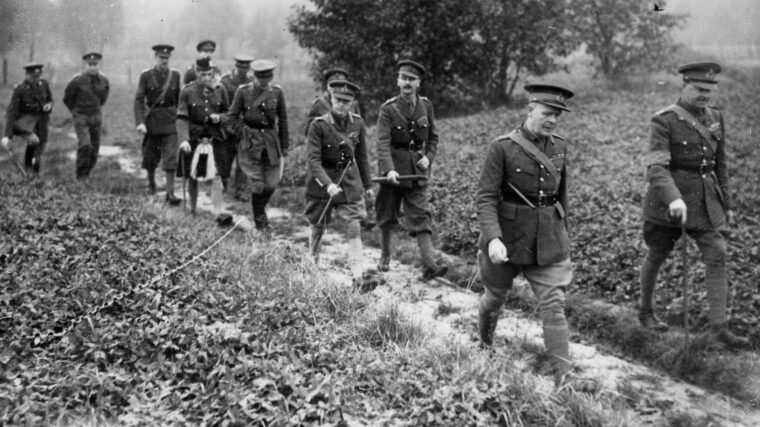
WWII
Cleveland-class Workhorses
By Nathan N. PreferDuring World War II, the U.s. “Arsenal of Democracy” produced thousands of ships of all shapes and sizes for the war effort. Read more


WWII
During World War II, the U.s. “Arsenal of Democracy” produced thousands of ships of all shapes and sizes for the war effort. Read more

WWII
On September 1, 1939, Adolf Hitler set World War II in Europe in motion when the spearheads of the Nazi Wehrmacht rolled across the German frontier into Poland. Read more

WWII
The first rays of sunlight on December 7, 1941, marked a typical Sunday morning for the sailors aboard the battleship USS California at Pearl Harbor. Read more

WWII
The definitive combat unit of comparable strength among the forces of the world during the 20th century was the division. Read more

WWII
Second Lieutenant William Capron first saw the attacking Messerschmitts as black dots descending rapidly to ambush his squadron of American fighter-bombers. Read more

WWII
In the six weeks since Britain’s formal declaration of war against Germany on September 3, 1939, the Royal Air Force (RAF) pilots of No. Read more

WWII
War has been described as long periods of extreme boredom punctuated by brief moments of extreme terror. Read more

WWII
Early in World War II, the British War Office and the Admiralty were shocked by daring small boat attacks, some of them suicidal, on Allied shipping in the Mediterranean Sea. Read more

WWII
Donald Malarkey’s comrades thought highly of him as a warrior and as a man. Staff Sergeant William “Wild Bill” Guarnere considered him his hero. Read more

WWII
By Blaine Taylor
One query that was raised on the Allied side in 1942—two years before Operation Overlord—was if the cross-English Channel invasion of Northwest Europe via France was necessary at all in order to defeat the Third Reich. Read more

WWII
Nobody knew it in the 6th Armored Division’s 9th Armored Infantry Battalion, but the tide of the Battle of the Bulge had turned by the time the outfit moved into snow-covered fields and forests near Bastogne. Read more

WWII
Following the apocalyptic initial phase of Operation Barbarossa starting on June 22, 1941, the Germans inflicted crippling losses on the Red Army Air Forces (VVS) and the Soviet Naval Air Forces (VVS-VMF). Read more

WWII
Aside from a number of prototypes and experimental vehicles, the Kettenkrad was one of the most unconventional vehicles built during World War II. Read more

WWII
Losses were high and morale low when the U.S. Eighth Air Force intensified its heavy bomber missions over Nazi-occupied Europe in late 1942. Read more

WWII
By the spring of 1943 the situation for Nazi Germany was becoming grave as military reverses in Russia and Africa sent the formerly unstoppable Wehrmacht reeling. Read more

WWII
A thousand questions flashed through Lieutenant Cy Lewis’s mind as he spotted the pair of German Messerschmitt Me-109 fighters banking in to attack him. Read more

WWII
The outbreak of World War II on September 1, 1939, found the United States in an isolationist mood that precluded, for the time being, any direct involvement in the conflict. Read more

WWII
First Lieutenant Gilbert B. Hadley—he liked to be called “Gib”—was buried back home in Kansas in 1997, some 54 years after he was killed in action on August 1, 1943. Read more

WWII
It was around noon, June 19, 1940, when a small caravan of cars set out from Antibes in southern France en route to the Spanish border. Read more

WWII
They shall not grow old as we that are left grow old;
Age shall not weary them nor the years condemn. Read more